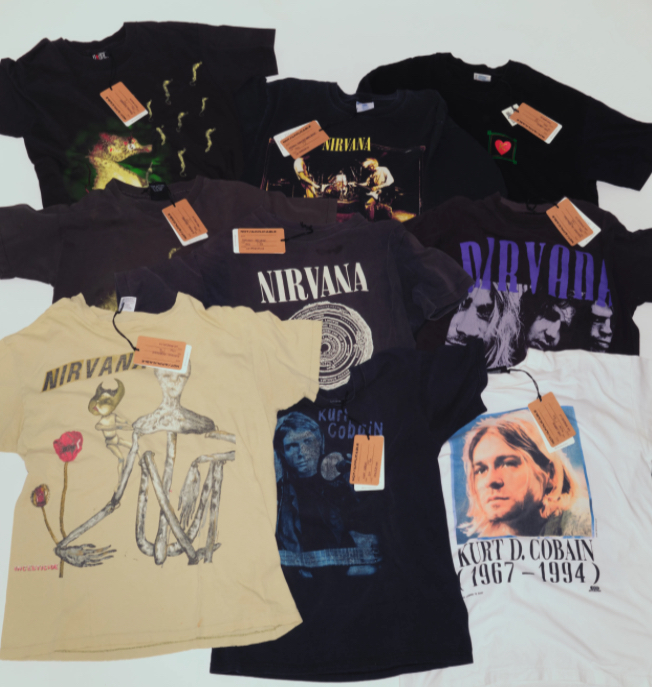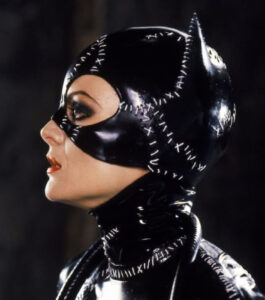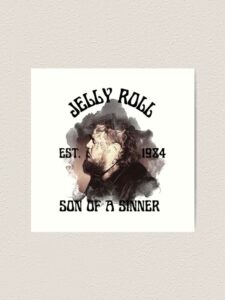Curated by Not/Applicable Vintage and presented exclusively at Selfridges London, The Tees That Played the Tour isn’t just a capsule collection—it’s a visceral time capsule. With cracked ink, weathered hems, and a tactile memory of concert sweat and speaker fuzz, these band t-shirts are not reprints. They’re relics. Every faded logo and stretched collar bears witness to another era of live sound and subcultural style. The garments in this collection weren’t printed for Instagram—they were made for intimacy, passed hand to hand, soaked in beer, and thrown across barricades.
They are, quite literally, fashion’s equivalent of bootleg tapes: raw, illegal-feeling, and full of life.
Beyond Nostalgia: Listening Through Fabric
“These aren’t just nostalgic pieces—they’re cultural artefacts,” explains Natasha Advani, founder of Not/Applicable Vintage. Her approach to archival fashion refuses the sterile, glass-case method. Instead, Advani treats each tee as a “visual setlist”—a wearable set of emotional memories encoded in fabric. From the sludgy nihilism of Nirvana to the euphoric swagger of Oasis, the collection operates as a living jukebox of youth culture’s most seismic shifts.
Each tee hums with its own frequency. It’s not about band branding—it’s about cultural resonance. These shirts are proof that what we wear can carry the echo of an entire era.
Nirvana: Every Thread Screams Nevermind
Among the capsule’s most powerful entries: nine original Nirvana tees, each tracing the band’s meteoric arc from Seattle basements to global tragedy. The range is staggering—early Bleach bootlegs, Nevermind tour pieces, and posthumous tributes etched with 1967–1994, turning each tee into a wearable gravestone.
Kurt Cobain’s ghost doesn’t haunt these shirts as a commodity; it lives inside them as ethos. Unlike slick reproduction pieces, these shirts weren’t made to trend. They were made to survive gigs. They were clutched during breakdowns, waved over heads in festival fields, used as makeshift rags during van tours, then folded lovingly on bedroom floors.
To wear one today isn’t a flex—it’s a ritual. It’s cultural communion.
A Language of Ink and Thread
The graphics aren’t just decoration—they’re documents. A tan Nirvana tee featuring a skeletal figure entwined with flowers recalls both Heart-Shaped Box’s emotional confusion and In Utero’s biological rawness. Elsewhere, the band is drenched in violet light, their features obscured but iconic, like ghosts performing a final encore.
In these shirts, music becomes visual. Youth movements become tangible. They speak to disillusionment, identity, subversion. They don’t just reference albums—they extend them. Each thread serves as a lyric, each graphic a liner note.
Not/Applicable: Archiving Emotion, Not Logos
While most resale platforms chase hype—Supreme box logos, early BAPE, and the ever-rotating carousel of status items—Not/Applicable moves differently. It curates feeling. Imperfection becomes provenance. Faded necklines are treasured, not feared. Cracked ink isn’t a flaw—it’s evidence.
This philosophy has cemented Not/Applicable’s place within London’s increasingly saturated vintage scene. Its refusal to sanitize history, to polish the patina off personal memory, sets it apart. And this drop with Selfridges is perhaps its most ambitious thesis yet.
Here, fashion and memory blur. This isn’t resale. It’s resound.
Fashion as Bootleg Anthropology
The revival of vintage band tees isn’t some fleeting Gen Z moment. It’s a cultural counterpunch. In an era where merch is printed for resale apps before the tour even begins, the soul has evaporated from the t-shirt. But this collection is different—it doesn’t whisper “limited drop.” It shouts lived moment.
These shirts recall a pre-digital world where fandom was physical. When tees were sold on folding tables, hand-screened in garages, or stolen off drum risers. They didn’t come with a barcode. They didn’t end up in an archive. They passed between sweaty hands and into dresser drawers—and, sometimes, stayed there for 30 years.
They remind us that fashion didn’t always follow algorithms. It followed feelings.
The Collector’s Paradox: Preserve or Play?
A dilemma shadows every vintage grail: to preserve or to wear? Some argue these shirts belong in glass cases, climate-controlled and untouched. But Natasha Advani is defiant. “They’re like vinyl,” she says. “You’re supposed to use them. Let them continue absorbing life.”
The Nirvana tee worn in 1993 isn’t finished. When worn again in 2025, it gathers more meaning. The sweat of the past meets the pulse of the present. The damage isn’t damage—it’s annotation.
They are not relics of closure. They are tools of expression still in motion.
From Grit to Gloss: A Selfridges Counterpoint
That these shirts find their temporary home in Selfridges is both ironic and brilliant. A place often associated with polished luxury and spotless surfaces is now host to artefacts of underground defiance. But this placement doesn’t sanitize the tees—it spotlights them.
It reframes them.
Positioning these cotton fossils inside a bastion of modern retail highlights the paradox: these shirts were born in dirt, in disobedience, in distortion—and now, they hang behind glass, commanding reverence. But their power lies not in exclusivity—it lies in survival. They’ve endured. They’ve outlived fads. They are, against all odds, still singing.
The Return of the Sonic Shirt
The Tees That Played the Tour isn’t just a retail project. It’s an act of historical preservation through personal garmentry. Each t-shirt pulses with lived energy. They aren’t museum pieces. They aren’t fast fashion. They’re something far rarer: textiles with a memory.
In an age where style is increasingly flattened by homogenization, these shirts remain resolutely analog. They are vulnerable, imperfect, and impossible to reproduce. Not/Applicable Vintage has created a sonic archive disguised as a fashion drop—an exhibit where you don’t just see the past, you wear it.
And most of all, you feel it.
No comments yet.







